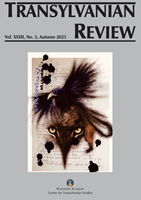Time in Dimitrie Cantemir’s Sacro-sanctae Scientiae Indepingibilis Imago (1700)
Time in Dimitrie Cantemir’s Sacro-sanctae Scientiae Indepingibilis Imago (1700)
Author(s): Vlad AlexandrescuSubject(s): Cultural history, Social history, Ancient Philosphy, Early Modern Philosophy, 17th Century, 18th Century
Published by: Academia Română – Centrul de Studii Transilvane
Keywords: Dimitrie Cantemir; conception of time; eternity; J. B. van Helmont; Francesco Patrizi; PseudoDionysius the Areopagite; Neoplatonism;
Summary/Abstract: Educated in Constantinople in the last decades of the 17th century, Dimitrie Cantemir (1673– 1723) encountered, on the one hand, the Paduan Aristotelianism transmitted by the Greek philosophical teachers trained in Venice and Padua, and, on the other, was inspired by a Platonic, Neoplatonic and Pseudo-Dionysian tradition, still alive in Eastern Christian thought. Written after a thorough study of the work of J. B. van Helmont, his treatise on time echoes these multiple roots and proposes a conception of time which affirms the non-categoriality and neutrality of the notion of time, its continuous, uniform, immovable, non-successive, immiscible, immutable character, distributive in the singular time of each creature (according to the model of Platonic participation), its participation in eternity, the emanation of eternity from the divine Intellect, and the precedence of time over Creation.
Journal: Transylvanian Review
- Issue Year: XXXII/2023
- Issue No: 3
- Page Range: 3-35
- Page Count: 33
- Language: English

